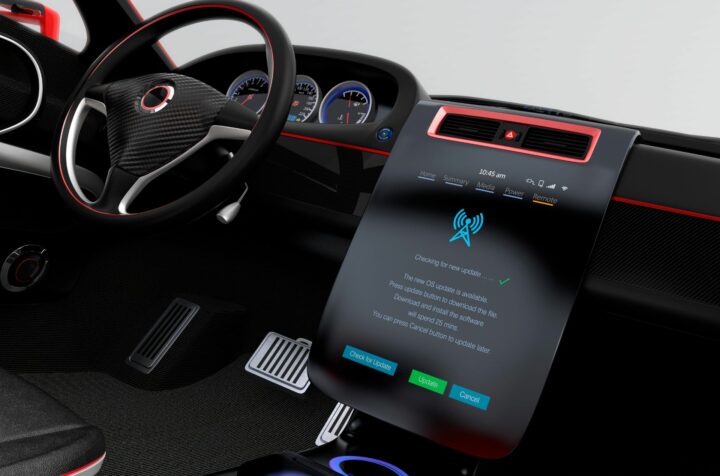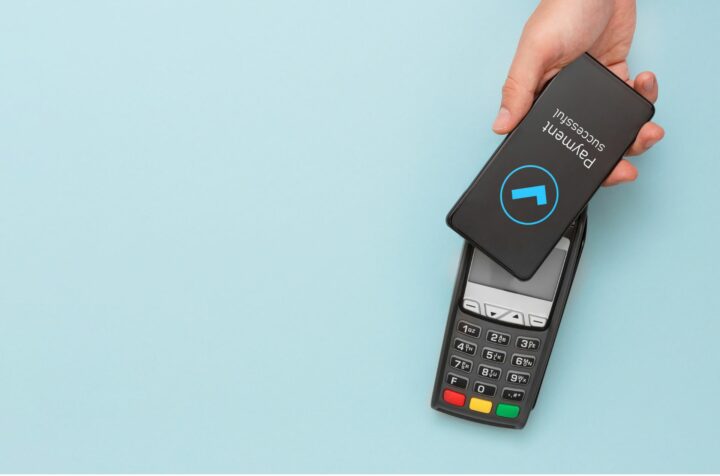Now that all things are digital and we’re living in a truly connected world, what would you consider to be an acceptable customer service response time?
The sad reality is that it’s probably longer than you’d expect.
A recent survey of 1000 companies by Norwegian CRM company SuperOffice, revealed that the average response time for a customer service request was 12 hours and 10 minutes.
Sure, you eventually got your response (hopefully a good one), but eight hours after you expected it. What if the person who responded sent an incomplete reply? An inaccurate one? Passed you on to yet another employee? Just gave a short, perhaps, dismissive response? They are human, after all.
How would you feel about that retailer? Valued and acknowledged? Would you be inclined to leave a bad review, even delete them from your Favorites, or remove their app?
What if it was between people in your own business? An unresponsive IT helpdesk? Financial questions that are never answered? An HR black hole? As an employee, what does that make you think of your organization?
When someone is in your store, what happens when they can’t find any assistance? Or the employee is too busy? Has no idea where the item they want is located?
Good, consistent, and timely help can make a huge difference when it comes to customer satisfaction. Increasingly so for those shopping online and/or using apps in-store.
But what do you do now when it feels like everyone’s online 24 hours a day and trying to communicate with you via apparently every device ever made – while expecting an answer ‘now’? This same immediate mentality is creeping into our real-world interactions.
Unfortunately, for most retailers, having an appropriately trained, 24-hour customer service team bristling with the latest tech is prohibitively expensive. The answer, for many, is to use software programs that use a combination of natural language processing, machine learning, and (perhaps most importantly) artificial intelligence to directly interact with their customers.
Today, we routinely call them chatbots and virtual assistants (VA).
Two sides of the same coin
Chatbots and VA’s may seem very different, but they are closely related.
A chatbot is the more conventional of the two, providing limited responses to questions. What time are you open? Do you have a new catalogue? However, with a chatbot, a more complex question (or one asked in an unfamiliar way) can bring a stop to the conversation. It simply cannot respond to ‘intent’, it needs clear and direct input (specific keywords). They are particularly good in a very defined area, such as ‘frequently asked questions’.
You’ll mostly see chatbots in an app (such as Facebook Messenger) or within a pop-up window on a website. For example, the Louis Vuitton chatbot2 enables you to search for items, browse by various criteria, locate stores, even connect to a human advisor. But more on them later.
Virtual Assistants, which can also be called Conversational Chatbots or Digital Assistants, provide a similar service, but are capable of much more predictive behaviors. Think of Amazon’s Alexa and Apple’s Siri.
By utilizing artificial intelligence and machine learning, they can respond to a range of questions that cover an extensive field, quickly recognize accents and colloquialisms, offer a more personalized experience, and can carry out near-flawless conversations with customers.
The ability of VA’s to gain new knowledge is essential for any retailer looking to automate tasks or services, such as their customer service.
A clear benefit for both is that they are available 24/7.
Using Chatbots and VA’s is a growing trend – back in 2018, Gartner predicted that “by 2021, 15% of all customer service interactions globally will be handled completely by AI, an increase of 400% from 2017.” They also saw digital customer service (leveraging conversational AI and intelligent automation) as one of their 5 key trends in their 2021 ‘Hype Cycle for Customer Service and Support Technologies’.
It’s worth noting that various versions of chatbots have been around for decades. But it wasn’t until the relatively recent advances in artificial intelligence and the uptake of mobile messaging applications, such as Facebook Messenger, Slack, and Viber, that their use has skyrocketed.
Make your customer journey memorable
Find out why online retailers must fully understand their customers’ needs and wants today.
Learn moreA quick look at some well-known retail chatbots & VA’s
IKEA’s Anna
One of the first large retailers to utilize a chatbot was IKEA. Launched in the early 2000s, Anna was used to guide people around their website, make basic suggestions, offer their catalogue, etc. At her peak, Anna was used in 20 countries and spoke in each local language.
Lidl’s Margot
Initially seen as Lidl’s ‘virtual sommelier’, Margot was launched in 2018 on Facebook Messenger to give customers advice about Lidl’s range of wines, including ideal pairings, food suggestions, and prices. Margot’s tone is friendly, and even uses machine learning to change how it phrases things to match the person’s question and way of speaking.
eBay’s ShopBot
Released in 2016 (and retired in 2018), ShopBot was developed to help people find ‘the best deals from eBay’s one billion listings’. Customers could narrow down their product search using voice, text, or images, which ShopBot would process to find the best match.
Marks & Spencer VA
UK retailer Marks & Spencer launched their virtual assistant on their website in 2017 to help customers handle problems with their promotional codes, loyalty codes, and a range of other customer issues. In the year after the VA was added to their site, the retailer estimated that it had saved them US$2.5 million in sales (that they may have lost out on owing to issues not being resolved).
Amazon’s Alexa, Google Now, Microsoft’s Cortana, and Apple’s Siri
Responding to voice commands, each of these well-known virtual assistants are present on a range of devices, from Alexa’s in-home boxes to PCs, tablets, smartphones, and even within cars. With each, you can ask about anything or direct them to do certain things (play a song, make a reservation), and control a variety of Internet of Things devices (such as smart lights).
Do androids dream of electric sheep?
There’s no doubt that a good chatbot or VA can deliver some amazing results. If nothing else, Alexa will keep your children entertained for a good hour or two!
But there are issues to consider when choosing them. And yes, it’s often about how people relate to them.
They’re not human.
When you’ve got an issue about something, and let’s say you’re ‘maybe’ a little angry, you click on the ‘help’ button. Up pops a friendly helper. But soon, you realize that it’s a bot. The question is, do you continue?
Reflecting a 2019 CGS survey of 1000 US consumers, which showed that 86% of consumers prefer to interact with a human agent, and 71% said they would be less likely to use a brand if it didn’t have human customer assistants available, many people skip automated response options to directly speak with a real person. For more personal and complex issues, people prefer the human touch.
Chatbots tend to be used for minor issues and when a quick resolution is possible. Though, as they become smarter and their conversational and problem-solving abilities become better, the expectation is that more people will use such services. Right?
They’re too human.
Consider IKEA’s Anna. In a 2016 BBC article on ‘Would you want to talk to a machine?’, one of the people involved in launching the mobile version of the chatbot, Magnus Jern, had some interesting insights:
“In the beginning, we tried to impersonate a person, and we found that there was no reason to do that,” he said. In fact, trying to make Anna “human-like’ meant that people were more likely to ask it stupid questions, Mr Jern said. “Around 50% of questions were sex-related,” he said.”
There’s also the concern that they hear too much. A PwC report on voice assistants showed that many see them as a privacy risk. 38% didn’t want something ‘listening in’ on their life all the time, and 28% were concerned about data and security.
In contrast to their usability and potential in making routine tasks faster and more efficient, there is always the human element to consider when the machine becomes smarter and knows your routines better than you know them yourself.
But as the undeniable benefits become clearer for consumers, and as more people shop online and/or use connected technology within stores, such issues will quickly wash away. You just need to find the right balance for you and your customers.
A case in point. The Louis Vuitton Virtual Assistant.
Throughout 2021, Testbirds has been working with Louis Vuitton to further improve their chatbot.
Already active on Louis Vuitton’s retail sites (look for the little speech bubble 💬), the assistant helps customers with inquiries and requests about products, stores, delivery, repairs, and product care instructions. With an ever-increasing number of requests reaching them via every digital touchpoint, their Client Advisors were overwhelmed (this was exacerbated by the ongoing pandemic as stores closed around the world). While the VA could handle most of these basic requests 24 hours a day and free up the advisors’ time to handle more complex requests.
This is already a great result for Louis Vuitton to free up resources but also for their customers who can quickly receive solutions at any time.
But as stores remained closed and more people used online communication, it was clear that various improvements were needed to ensure it could continuously improve.
With an overarching goal to improve the quality of their assistant and make their customers’ experience even better, Louis Vuitton brought in Testbirds to analyze and label conversations and to gather direct, unbiased feedback from crowdtesters on how the assistant performs in a real-world setting.
From our side, this meant selecting people who closely resembled actual Louis Vuitton customers. Sex, age, annual income, where they live, all had to be considered. In this case, Louis Vuitton wanted to test their Japanese assistant, which meant a clear focus on Japan.
Each tester would then use a ‘loose script’ (to help guide them in areas Louis Vuitton wanted to see more quality improvements) to conduct between 70 and 100 interactions with the Virtual Assistant.
Each interaction was recorded (was it okay, if not, why), which included their feelings and thoughts about the experience (was the VA friendly? did you feel you’d rather interact with a human? would you recommend using the assistant?).
Once all data was collected, it was analyzed to find recurring issues and any insightful feedback. Over 1000 sentences were also provided by the testers to help improve the assistant’s Artificial Intelligence (in their original development they had not anticipated enough that there is a very formal way of talking). Also, in some areas where they felt they had good conversation flows, crowdtesters were able to show where they were not working very well.
Overall, our crowdtesters identified two primary areas for improvement: Giving the assistant more natural responses and more (new) topics to cover.
That’s good for Louis Vuitton’s customer service and good for their customers.
Taking the digital plunge
The exciting potential for chatbots and virtual assistants can only grow as each solution becomes more popular and incorporated within vital digital touchpoints.
They can help you:
- Save money and time when it comes to delivering customer service.
- Ensure your marketing is more efficient (especially online).
- Send targeted campaigns and messages in real-time.
- Enable you to increase sales – specifically by building a better customer experience (imagine a true omnichannel chatbot setup that links your business – online and offline – with your customers on any device).
- Provide internal training, link your teams, even help your employees answer questions about your business, and a lot more.
- Stay relevant. The boom in such solutions shows no sign of ending. If you aren’t using them, it’s a sure bet your competitors are, and as younger generations increasingly adopt the use of chatbots and VA’s, it’s best to future-proof your business for when they’re purchasing.
The point is to never lose the true human element. A chatbot or virtual assistant can only be as good as the people who are developing them. Artificial intelligence only enables chatbots and VAs to mimic human behavior (with varying degrees of success). They are not self-aware.
This is why good, comprehensive, and human, testing is so essential. With access to over 1,000,000 real testers from around the world, we can ensure your chatbot or virtual assistant is a perfect fit for your customers.
So, let’s have a chat. We promise it won’t be with a bot!
Or will it?








